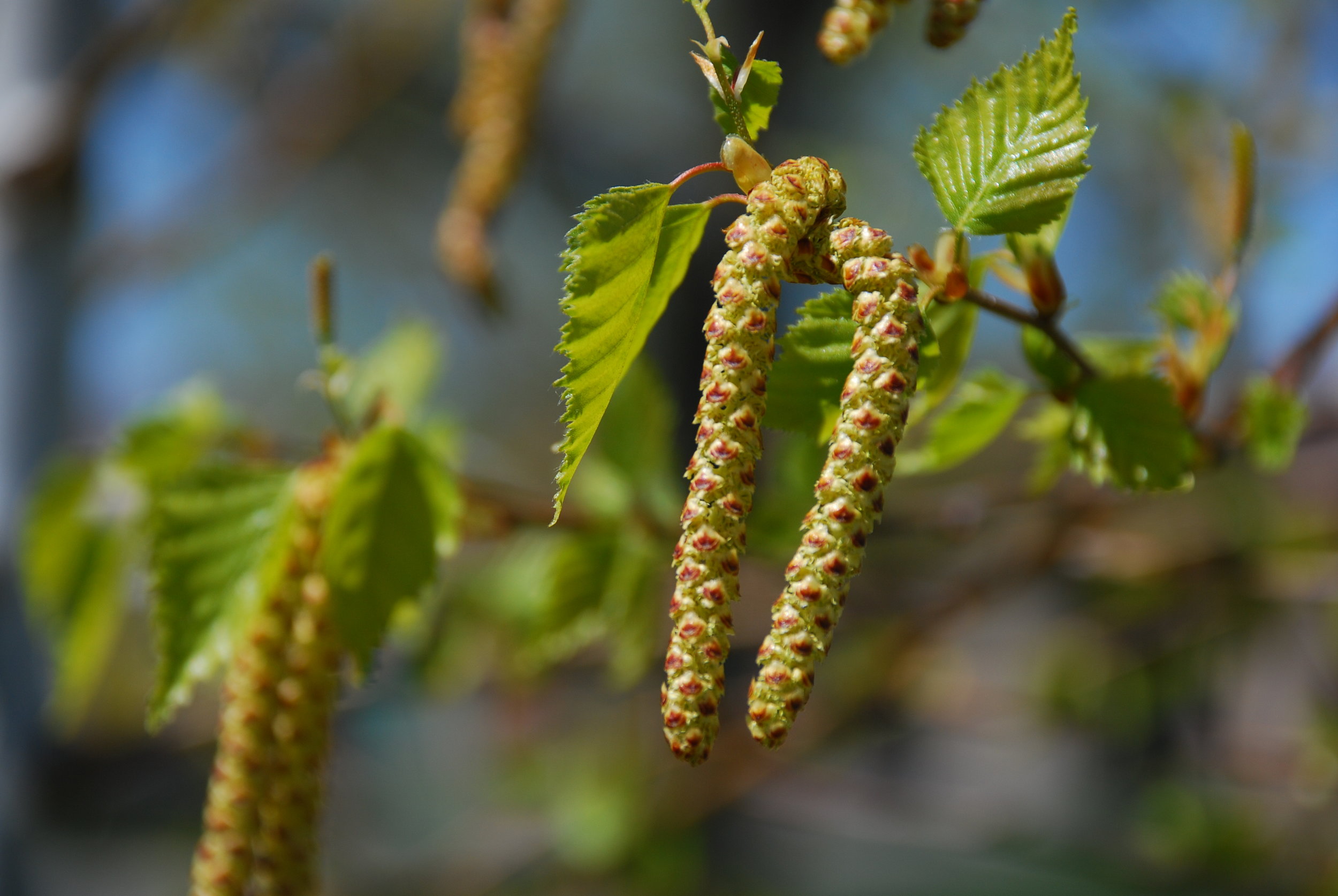Betula / Birch
Betula / Birch
Among the most well-known attributes of this Genus of trees is probably the unique bark patterns. Most are familiar with white bark of a birch, but what most do not know is that the color of a Birches' bark changes with age. Their bark color goes through transitional phases from about 3 year-old and younger stems, to 6 year-old stems to mature trunks. Most varieties of birch have a different colored bark on their younger growth than they do on their older growth.
Betula nigra / river birch
This river bottom native also does well on upland soils. Resistant to bronze birch borer, it has nice yellow fall color, and attractive cinnamon-brown exfoliating bark for an interesting winter effect. Clumps have three or more stems
Height: 40 - 50 ft
Spread: 30 - 40 ft
Fall Color: Yellow
USDA Zone: 4 - 8
“most do not know that the color of a Birches’ bark changes with age”
Betula pendula 'Dalecarlica'
cutleaf weeping birch
The famous cutleaf weeping birch, features finely cut leaves and a very pronounced weeping habit of growth. This is one of the most popular accent trees of all time.
The Cutleaf Weeping Birch has dark green foliage throughout the season. The deeply cut ferny leaves turn an outstanding yellow in the fall. Neither the flowers nor the fruit are significant. The peeling white bark is extremely showy and adds significant winter interest.
Height: 30 - 45 ft
Spread: 20 - 25 ft
Fall Color: Yellow
USDA Zone: 2 - 8
Betula platyphylla 'Fargo'
DAKOTA PINNACLE® BIRCH
Selected for its narrow columnar to narrowly pyramidal growth habit. Hardier than the species with dense dark green foliage that turns golden yellow in the fall. The bark is white and smooth with slight exfoliation when mature. Dakota Pinnacle® is drought tolerant and has above average tolerance to bronze birch borer and strong winds.
Height: 30 - 35 ft
Spread: 10 - 15 ft
Fall Color: Yellow
USDA Zone: 2 - 8
Betula populifolia 'Whitespire'
whitespire birch
A white-barked birch with lustrous dark green foliage that changes to yellow in the fall. The twigs and foliage are fine textured. Tolerant of heat and thrives in a wide range of soils. Resistant to the bronze birch borer.
Height: 30 - 40 ft
Spread: 20 - 35 ft
Fall Color: Yellow
USDA Zone: 4 - 7
CARE: POSITIVES & DRAWBACKS
POSITIVES:
Birch are an extremely cold tolerant tree. They prefer slightly acidic soils but adapt to our alkaline soils fairly well. Perhaps the biggest challenge they have with heavy soil is that their growth rate is slowed.
Like maples the birch flowers as it leafs out. Since it flowers so early it uses wind to pollinate as there are generally few insects around in early spring.
DRAWBACKS:
Perhaps the biggest drawback to Birch is there root system. They are native to regions near rivers and streams and as such do not ever develop a deep root system. Since this is the case, they seldom to never reach the water table and in periods of extreme drought are subject to death because of lack of available water. This competes with lawns for water and is one of few mature trees where a lawn irrigation system could perhaps be used to water them.
They are also susceptible to an insect infestation. The Bronze Birch Borer affects birch trees in the same way as the infamous Emerald Ash Borer does to trees of the Ash genus. There are reported cases of Bronze Birch infestation in the Williston community. There ARE systemic insecticides available to treat these trees. As both Ash and Birch are wind pollinated there is no concern of killing plant pollinators such as bees when treating these trees for this disease.
PRUNING:
Birch trees, like maple bleed when dormant so your optimal time for pruning birch is after the leaves have fully developed and until late summer as the leaves begin to turn.
For more on identifying old wood and new wood see our page on care of woody plants.






